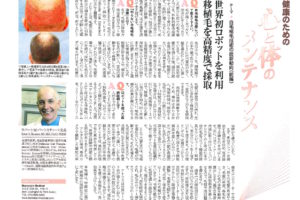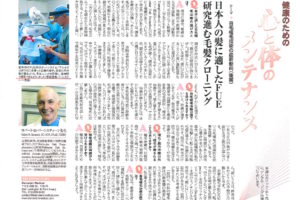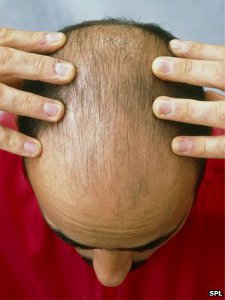Bizymoms.com, the premier work-at-home community on the Internet with more than 5 million visitors per year, has interviewed Dr. Robert M. Bernstein in order to answer readers’ common questions about hair restoration and hair loss.
Below is a sample of the interview:
Q: Who would be a good candidate for hair transplant surgery?
In general, men and women age 30 and older can be candidates, but there are a host of factors that determine if a person is a good candidate…
Q: How does hair transplantation work?
Hair removed from the permanent zone in the back and sides of the scalp continues to grow when transplanted to the balding area in the front or top of one’s head…
Q: What can be done for people dissatisfied with previous mini/micrograft procedures?
If the grafts are too large they can be removed, divided into smaller units under a microscope, and re-implanted back into the scalp (the same day)…
Q: What are the possible harmful effects of Propecia and Rogaine?
The main side effect of Propecia (finasteride 1%) is sexual dysfunction, which occurs in about 2-4% of men taking the drug. Fortunately, these side effects are completely reversible when the medication is stopped. […] The main side effect of Rogaine (minoxidil) is scalp irritation. […] Both Propecia and Minoxidil can produce some hair shedding at the beginning of treatment, but this means that the medications are working…
Q: How many grafts/hairs are needed for hair transplant surgery?
An eyebrow restoration can require as few as 200 grafts, a hairline 800 and a scalp, with significant hair loss, 2,500 or more grafts. An equally important consideration is the donor supply…
Q: What are the advanced hair transplant techniques?
Follicular Unit Transplantation (FUT), where hair is transplanted exclusively in naturally occurring follicular units, is the state-of-the art. […] A more recent means of obtaining the donor hair, the follicular units are extracted individually from the back of the scalp. This procedure, called Follicular Unit Extraction (FUE) eliminates the need for a line-scar, but is a less efficient procedure for obtaining grafts…
Q: What are the new hair restoration treatments available for men and women?
Low-Level Laser Therapy (LLLT) utilizes cool lasers to stimulate hair growth and reduce shedding of hair. […] Latisse (Bimatoprost) is an FDA approved topical medication for eyelash growth.
Go to Bizymoms.com to read the full interview.
Posted by Robert M. Bernstein M.D. 






 Men’s Health has published a new spotlight, called “Hair Health.” The multi-article spotlight is featured on the magazine’s website homepage and covers a wide variety of topics related to
Men’s Health has published a new spotlight, called “Hair Health.” The multi-article spotlight is featured on the magazine’s website homepage and covers a wide variety of topics related to  The New York Times interviewed Dr. Bernstein for a full-length article on hair loss and hair transplant options for women interested in hair restoration. The article – titled, “Tricks and Transplants for Women’s Hair Loss” – covered modern hair transplantation techniques, hair transplant costs, camouflage techniques, and more.
The New York Times interviewed Dr. Bernstein for a full-length article on hair loss and hair transplant options for women interested in hair restoration. The article – titled, “Tricks and Transplants for Women’s Hair Loss” – covered modern hair transplantation techniques, hair transplant costs, camouflage techniques, and more.



